It totally figures that about the time I am ready to move on
from a device, its accessories will start becoming available. Ah
well, such is the life of an early adopter…
Case in point, I recently received the new
PDair aluminum case for the
HTC Apache/PPC-6700. I have long been a fan of this company’s
hard cases, so I was looking forward to pairing their latest
aluminum offering with my PDA Phone. As some of you may recall from
my PPC-6700 review, one of my concerns regarding the PPC-6700 was
its plastic body and the lack of overall protection should the
device ever be dropped. Those concerns are definitely quieted with
the introduction of this type case, but there are a coupe of
caveats which we will explore in this review…
The PDair metal case is composed of aircraft-grade aluminum
which has been lined in springy black neoprene. The case measures
4.4″ tall x 2.7′ wide x 1.2″ thick, and it weighs 1.7 ounces. The
6700 that it will cover measures 4.3″ tall (not counting the
antenna) x 2.3″ wide x 0.93″ thick when naked, and it weighs 6.6
ounces, so adding the case will add a bit of bulk to an already
blocky device.
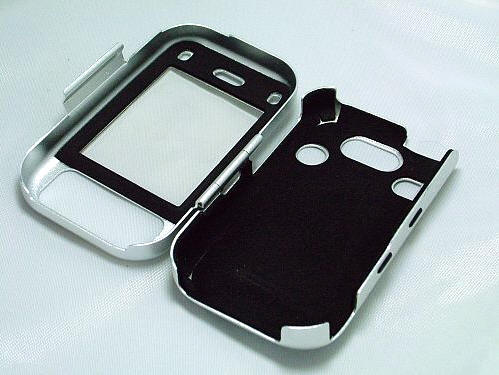
The case is opened by popping the tension clip on the right
side. A 1.5″ hinge is on the let side, so in effect the case opens
like a book being started from the wrong end.
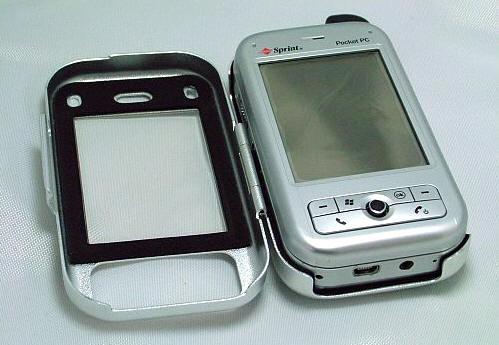
The PPC-6700 sits inside the case snugly, and at first glance it
might appear that the screen is completely left uncovered and thus
unprotected. However, that is not so. I’ll talk about that in a
moment.
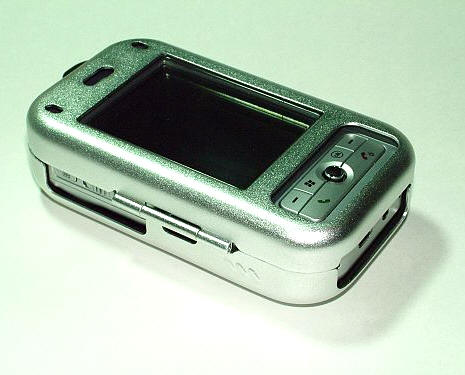
In the meantime, take a look at how the left side has a cutout
which allows access to the recorder button, volume slider, Explorer
button and Infrared port. The buttons can be a little tricky to get
to for those with larger fingers; even though the cutout is large
enough, the buttons are at the top edge where the two halves of the
case come together. The Explorer button is directly under the
corner of the hinge, so it can be the most tricky to press.
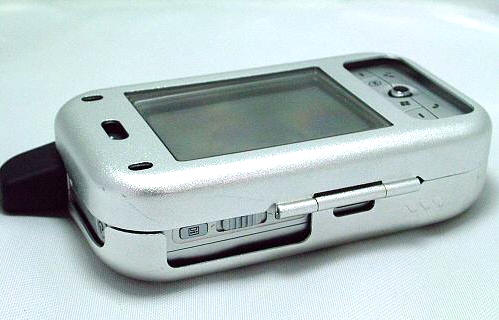
The right side of the case features the snap closure and a
cutout for the camera button
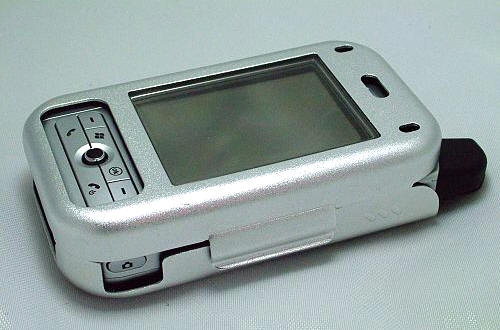
In the case, the 6700’s screen is completely covered by a sheet
of plastic which has been built into the viewing area. This means
that anytime the power button on the phone is pressed the screen
will be immediately viewable, and as calls come in everything can
be operated as if the phone were not in a case at all. There are
cutouts which allow the unfettered use of the front button cluster
and joystick.
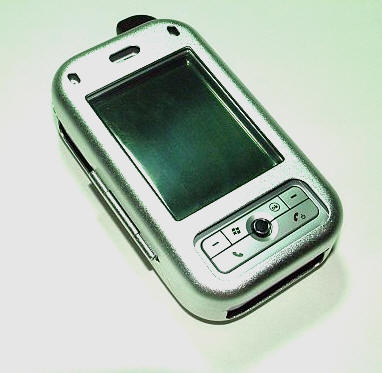
An unexpected side effect of having the plastic cover over the
PDA screen, and in conjunction with all of the necessary cutouts
around the case, meant that dust and other airborne “floaters” were
always getting between the case’s clear screen and the PDA’s
screen. This drive me crazy! While it was great to have the
protection, it almost seemed like more trouble than it was worth at
times.
As I mentioned in my February 25 diary entry, not having
immediate access to the touch screen did help me to further develop
my “one handed operation of the phone” skills, because I now had to
rely on using the hard buttons below the screen in tandem with the
joystick. That doesn’t mean that I grew to like it or that it was
ever easy. It just had to be done as it was not always practical to
pop the case open to look for a number. This is definitely a time
when using Voice Command would come in handy – both for phone calls
and for application opening.
The top of the case has cutouts so that the antenna, miniSD card
slot and power button are all exposed. The design of the case is
clever in that even though all buttons are exposed, all corners are
covered. In the even of a fall, the PDA would be much better
protected than if it were not in the case.
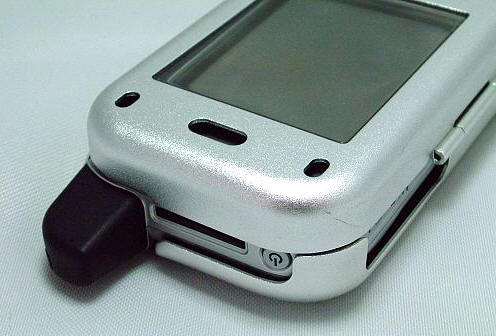
The back of the case has cutouts to allow the use of the
external antenna port, the camera, the LED light and the mirrored
rear speaker. There is also a hole which can be used to attach the
included removable belt clip.

Adding the belt clip is a simple matter of screwing the
receiving nub into the hole, and then attaching the clip.
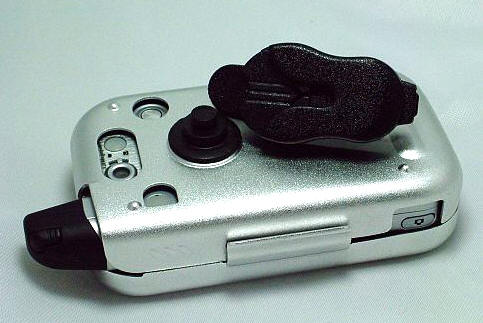
The bottom of the case has a cutout for the reset button, sync
and charge port, the headphone jack and the microphone. The case
can not be used in conjunction with the cradle, but it works
perfectly well with a sync and charge cable.
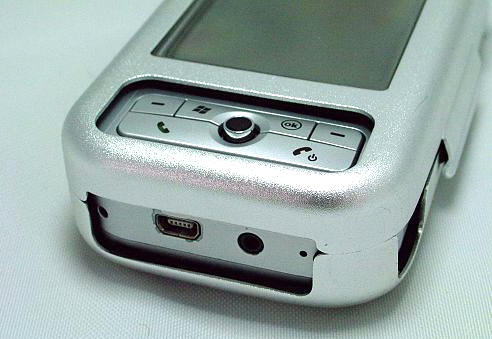
Perhaps the most innovative and exciting feature of this case is
that it opens to allow full use of the sliding keyboard. The
only problem is that I can’t help but think that the hinge should
have been placed on the opposite side of the case. Wouldn’t it have
made more sense if the side of the case that flops useless when
using the keyboard could have been under the sliding screen,
instead of directly under the keyboard?
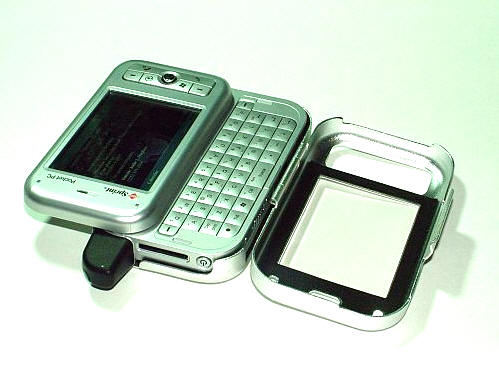
I thought maybe it might be an issue of clearance, since the
sliding portion of the screen would have to pass directly over the
case’s hinge, but it appears that there is enough room. Perhaps a
later version will place the hinge on the opposite side.
Overall the PDair case is an effective way to protect the
expensive and fragile HTC Apache. It is the only case at
this time which allows the use of the keyboard while the PDA is in
place, but the hinge being on the “wrong” side makes use of the
keyboard less comfortable. The clear plastic window does provide
good protection for the screen, but it also hinders typical PDA use
and allows the collection of unwanted dust and debris. PPC-6700
users that need the protection a case such as this can offer will
simply have to decide whether or not they can live with the
caveats. For now, it is my PPC-6700’s home.
Gerber Gear 22-47162N Fast Draw Folding Assisted Opening Pocket Knife, Fine Edge, Black
$50.00 (as of April 18, 2025 17:33 GMT -04:00 - More infoProduct prices and availability are accurate as of the date/time indicated and are subject to change. Any price and availability information displayed on [relevant Amazon Site(s), as applicable] at the time of purchase will apply to the purchase of this product.)Gerber Gear EVO Jr. Folding Knife - Serrated Edge [22-41493]
13% OffProduct Information
| Price: | 28.0 |
| Manufacturer: | PDAir |
| Requirements: |
|
| Pros: |
|
| Cons: |
|


